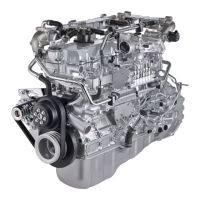GENERAL INFORMATION 0A–1
GENERAL INFORMATION
CONTENTS
General Information. . . . . . . . . . . . . . . . . . . . . . . . . . . . . . . . . . . . . . . . . . . . . . . . . . . . . . . . . . . . . . . . . . . . . . . . . . . . . . . 0A
Service Information . . . . . . . . . . . . . . . . . . . . . . . . . . . . . . . . . . . . . . . . . . . . . . . . . . . . . . . . . . . . . . . . . . . . . . . . . . . . . . . 0B
GENERAL INFORMATION
CONTENTS
General Repair Instruction . . . . . . . . . . . . . . . . . . . . 0A-1
Illustration Arrows . . . . . . . . . . . . . . . . . . . . . . . . . . . 0A-2
Abbreviations . . . . . . . . . . . . . . . . . . . . . . . . . . . . . . 0A-3
Nut and Bolt Angular Tightening Method. . . . . . . . . 0A-4
Standard Bolt Torque Specifications . . . . . . . . . . . . 0A-6
Recommended Thread Locking Agents . . . . . . . . . 0A-8
Main Data and Specifications. . . . . . . . . . . . . . . . . . 0A-9
Engine External View Drawing. . . . . . . . . . . . . . . . 0A-11
Service Standard . . . . . . . . . . . . . . . . . . . . . . . . . . 0A-12
Torque Specifications. . . . . . . . . . . . . . . . . . . . . . . 0A-16
Special Tools. . . . . . . . . . . . . . . . . . . . . . . . . . . . . . 0A-24
Troubleshooting . . . . . . . . . . . . . . . . . . . . . . . . . . . 0A-25
Lubricant Application . . . . . . . . . . . . . . . . . . . . . . . 0A-35
Sealant Application. . . . . . . . . . . . . . . . . . . . . . . . . 0A-35
General Repair Instruction
1. Before performing service operations, disconnect the
ground cable from the battery to reduce the chance of
cable damage and burning due to short circuiting.
2. Use a cover on body, seats and floor to protect them
against damage and contamination.
3. Brake fluid and anti-freeze solution must be handled
with care because they can cause paint damage.
4. The use of proper tools and special tools, where
specified, is important for efficient and reliable
performance of service repairs.
5. Use genuine Isuzu parts.
6. Used cotter pins, plastic clips, gaskets, O-rings oil
seals, lock washers, and self-locking nuts should be
discarded and new ones should be installed. Normal
function of the parts cannot be maintained if these
parts are reused.
7. To facilitate proper and smooth reassembly
operation, keep disassembled parts neatly in groups.
Keeping fixing nuts and bolts separate is very
important, as they vary in hardness and design
depending on position of installation.
8. Clean the parts before inspection or reassembly. Also
clean oil ports, etc. using compressed air, and make
certain they are free from restrictions.
9. Lubricate rotating and sliding faces of the parts with
oil or grease before installation.
10.When necessary, use a sealer on gaskets to prevent
leakage.
11.Carefully observe all specifications for nut and bolt
torques.
12.When a service operation is completed, make a final
check to be sure the service has been done properly
and the problem has been corrected.
13.Allow the engine to cool before beginning any service
procedure.
This will eliminate the danger of fire and possible
injury.
14.Hot steam under pressure may escape from the
radiator if the coolant is drained while the engine is
hot. This can result in serious burns. Allow the engine
to cool before draining the coolant.
15.Hot engine oil can cause severe skin burns. Allow the
engine to cool before draining the engine oil.
16. While working around a running engine, avoid contact
with moving parts and hot surfaces to prevent injury.
17.Wear safety glasses when using compressed air.
Flying particles may cause eye injury.
18. Always wear safety goggles when working with fuel to
protect the eyes from fuel splash.
19. Test fluid from the injection nozzle tester will spray out
of the injection nozzle under great pressure.
It can easily puncture a person’s skin.
Keep your hands away from the injection nozzle at all
times.
20.Do not use your fingers to feel for fuel leaks at fittings.
Fuel pressure is high enough to penetrate the skin.
21.Be careful when changing fuel system components:
Diesel fuel is flammable. Be sure that the ignition key
of OFF. Do not smoke or allow open flame in the area
while changing fuel system components.

